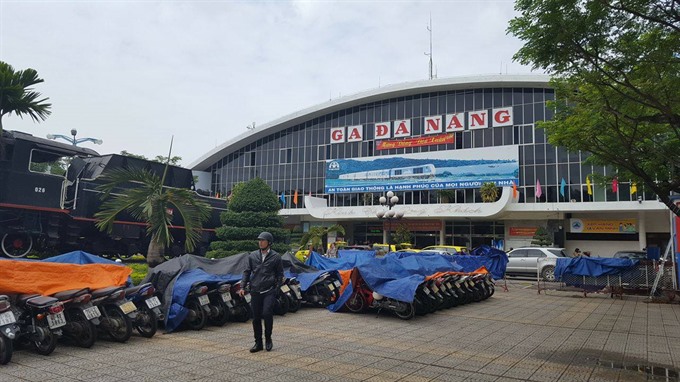Options for funding the relocation of the city's railway station
The Da Nang authorities have already agreed a plan to relocate the city’s railway station.
 |
| The present railway station (Photo: Internet) |
According to the plan, the 1st stage of the work will involve the construction of 18.26km of new railtrack and the improvement of 7km of the existing. In addition, a new passenger terminal will be built in Lien Chieu District, whilst the Le Trach goods station will be upgraded.
The 1st stage will also cover the reconstruction of the Nam O and Quan Nam bridges, an overpass at a road-railway crossing, and 4 cross roads at intersections. A synchronous signalling system will be installed, and locomotive equipment at the existing railway station will be moved to the new station.
The 1st stage of the project is expected to cost around 3,451 billion VND.
The municipal authorities have submitted to the national government for their consideration 4 options for funding the 1st stage.
In the first plan, construction of the 1st stage would be implemented on the build-transfer (BT) basis. The project’s developer would be allowed to use the land at the existing railway station, valued at 1,192 billion VND, after moving the station to its new location. The remaining 2,259 billion VND needed for this stage would come from the national budget.
With the second plan, the implementation of the 1st stage would be based on the BT and build-transfer-lease (BTL) investment models. The project’s developer would cover all the construction costs of the stage. Like the above-mentioned 1st plan, the developer would also enjoy the benefit of using the existing railway station land.
Once this stage is fully completed, Vietnam Railways would take responsibility for managing, using and paying the remaining 2,259 billion VND capital for the developer from its revenue. The payback period is expected to be within 16 years.
As for the third plan, the implementation of the 1st stage of the project would be based on BT and build-operate-transfer (BOT) investment models. The payback period is expected to be within 22 years.
The final plan is to appeal for ODA loans for implementing the 1st and 2nd stages of the project. In addition to the 1st stage above, the 2nd stage will cover the construction of a new road linking the new passenger terminal with National Highway 1A, and a tunnel to help link the city’s western and eastern sides to match with the city’s master planning. The total cost of the full project is estimated at 6,731 billion VND.
In addition, the national government will guarantee Viet Nam Railways access to ODA loans worth 4,602 billion VND.
Of the 4 plans, the city’s authorities are proposing that the national government choose the fourth. The main reason is said to be that the use of ODA loans will help the city complete the project to match with its master planning, as well as take the initiative in managing the new railway station. If access to ODA loans fails, then the 2nd plan should be chosen.